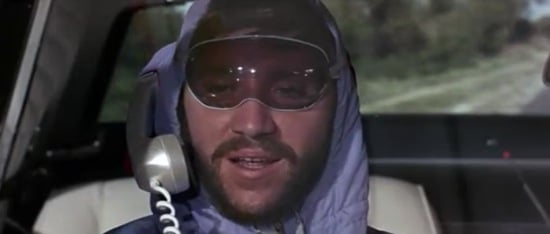Shocking Blocking (24)
By:
August 8, 2011

HILOBROW’s Peggy Nelson has argued that the advent of mobile phones permits us to recognize that we’re not discrete units, at least not all the time — sometimes, she says, we’re intersections. Which is why we shouldn’t get bent out of shape when someone with whom we’re talking takes a phone call, or begins emailing or tweeting. They’re intersecting, and that’s a beautiful thing.
Nelson’s argument appeals to me. However, intersecting via phone while barreling through an intersection is another matter. In 2010, the U.S. National Highway Traffic Safety Administration reported that, in the previous year, nearly one thousand fatalities (18% of all distracted-driving fatalities) were caused by drivers distracted by their mobile phones. Epidemiological studies indicate that the parietal lobe of the brain, where spatial tasks are managed, are taxed by holding mobile phone conversations. (Conversations with a passenger in the car aren’t so taxing, presumably because the parietal lobe doesn’t have to struggle to situate the conversation’s participants.) Long-distance intersecting is something we may all some day learn to do gracefully. But we haven’t done so yet.
Check out Kelp (Bob Denver) in this scene from the beach party movie For Those Who Think Young. Like the bluetooth-enhanced cyborgs yakking to themselves in line at Starbucks or on the subway platform, he’s hearing disembodied voices; he’s socially withdrawn; his behavior is disorganized; he has difficulty paying attention. Kelp looks like a schizophrenic — a term which means “split-minded,” or perhaps: “intersected.”
An occasional series analyzing some of the author’s favorite moments in the positioning or movement of actors in a movie.
THIRTIES (1934–1943): It Happened One Night (1934) | The Man Who Knew Too Much (1934) | The Guv’nor (1935) | The 39 Steps (1935) | Young and Innocent (1937) | The Lady Vanishes (1938) | Mr. Smith Goes to Washington (1939) | The Big Sleep (1939) | The Little Princess (1939) | Gone With the Wind (1939) | His Girl Friday (1940)
FORTIES (1944–1953): The Diary of a Chambermaid (1946) | The Asphalt Jungle (1950) | The African Queen (1951)
FIFTIES (1954–1963): A Bucket of Blood (1959) | Beach Party (1963)
SIXTIES (1964–1973): For Those Who Think Young (1964) | Thunderball (1965) | Clambake (1967) | Bonnie and Clyde (1967) | Madigan (1968) | Wild in the Streets (1968) | Barbarella (1968) | Harold and Maude (1971) | The Mack (1973) | The Long Goodbye (1973)
SEVENTIES (1974–1983): Les Valseuses (1974) | Eraserhead (1976) | The Bad News Bears (1976) | Breaking Away (1979) | Rock’n’Roll High School (1979) | Escape from Alcatraz (1979) | Apocalypse Now (1979) | Caddyshack (1980) | Stripes (1981) | Blade Runner (1982) | Tender Mercies (1983) | Monty Python’s The Meaning of Life (1983)
EIGHTIES (1984–1993): Repo Man (1984) | Buckaroo Banzai (1984) | Raising Arizona (1987) | RoboCop (1987) | Goodfellas (1990) | Candyman (1992) | Dazed and Confused (1993) |
NINETIES (1994–2003): Pulp Fiction (1994) | The Fifth Element (1997)
OUGHTS (2004–13): Nacho Libre (2006) | District 9 (2009)
Joshua Glenn’s books include UNBORED: THE ESSENTIAL FIELD GUIDE TO SERIOUS FUN (with Elizabeth Foy Larsen); and SIGNIFICANT OBJECTS: 100 EXTRAORDINARY STORIES ABOUT ORDINARY THINGS (with Rob Walker).
